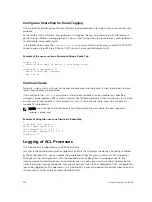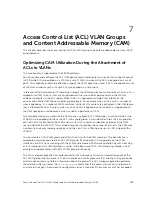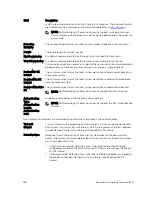
8
Bidirectional Forwarding Detection (BFD)
BFD is a protocol that is used to rapidly detect communication failures between two adjacent systems. It
is a simple and lightweight replacement for existing routing protocol link state detection mechanisms. It
also provides a failure detection solution for links on which no routing protocol is used.
BFD is a simple hello mechanism. Two neighboring systems running BFD establish a session using a
three-way handshake. After the session has been established, the systems exchange periodic control
packets at sub-second intervals. If a system does not receive a hello packet within a specified amount of
time, routing protocols are notified that the forwarding path is down.
BFD provides forwarding path failure detection times on the order of milliseconds rather than seconds as
with conventional routing protocol hellos. It is independent of routing protocols, and as such, provides a
consistent method of failure detection when used across a network. Networks converge faster because
BFD triggers link state changes in the routing protocol sooner and more consistently because BFD
eliminates the use of multiple protocol-dependent timers and methods.
BFD also carries less overhead than routing protocol hello mechanisms. Control packets can be
encapsulated in any form that is convenient, and, on Dell Networking routers, BFD agents maintain
sessions that reside on the line card, which frees resources on the route processor module (RPM). Only
session state changes are reported to the BFD Manager (on the RPM), which in turn notifies the routing
protocols that are registered with it.
BFD is an independent and generic protocol, which all media, topologies, and routing protocols can
support using any encapsulation. Dell Networking has implemented BFD at Layer 3 and with user
datagram protocol (UDP) encapsulation. BFD functionality will be implemented in phases. BFD is
supported on dynamic routing protocols such as VRRP, OSPF, OSPFv3, IS-IS, and BGP.
How BFD Works
Two neighboring systems running BFD establish a session using a three-way handshake.
After the session has been established, the systems exchange control packets at agreed upon intervals. In
addition, systems send a control packet anytime there is a state change or change in a session parameter.
These control packets are sent without regard to transmit and receive intervals.
NOTE: The Dell Networking Operating System (OS) does not support multi-hop BFD sessions.
If a system does not receive a control packet within an agreed-upon amount of time, the BFD agent
changes the session state to Down. It then notifies the BFD manager of the change and sends a control
packet to the neighbor that indicates the state change (though it might not be received if the link or
receiving interface is faulty). The BFD manager notifies the routing protocols that are registered with it
(clients) that the forwarding path is down and a link state change is triggered in all protocols.
136
Bidirectional Forwarding Detection (BFD)
Summary of Contents for Z9000
Page 1: ...Dell Configuration Guide for the Z9000 System 9 7 0 0 ...
Page 80: ...grub reboot 80 Management ...
Page 128: ... 0 Te 1 1 Te 1 2 rx Flow N A N A 128 Access Control Lists ACLs ...
Page 491: ...Figure 70 Configuring OSPF and BGP for MSDP Multicast Source Discovery Protocol MSDP 491 ...
Page 496: ...Figure 73 MSDP Default Peer Scenario 1 496 Multicast Source Discovery Protocol MSDP ...
Page 497: ...Figure 74 MSDP Default Peer Scenario 2 Multicast Source Discovery Protocol MSDP 497 ...
Page 498: ...Figure 75 MSDP Default Peer Scenario 3 498 Multicast Source Discovery Protocol MSDP ...
Page 760: ...Figure 100 Single and Double Tag TPID Match 760 Service Provider Bridging ...
Page 761: ...Figure 101 Single and Double Tag First byte TPID Match Service Provider Bridging 761 ...
















































